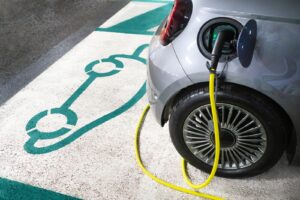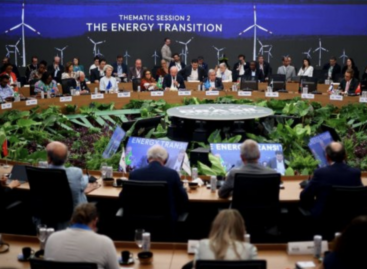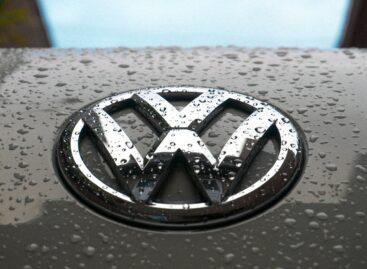Stricter European emissions regulations are coming to the car market, but there is room for maneuver
The world of mobility is changing rapidly – in line with climate goals, the European Union is imposing increasingly stricter vehicle emission standards, while under pressure from market players it would provide a more flexible transition for those affected. The aim of the so-called CAFE rules (Corporate Average Fuel Economy) is to reduce the average CO₂ emissions of new cars and vans, while at the same time creating a framework that encourages, but does not make the transition impossible. The regulation is primarily aimed at manufacturers, but company car fleets and fleet managers are also becoming key players in the change. Ayvens, the leading leasing and mobility service provider in our country, has summarized what is worth knowing about the upcoming changes and how this will affect the car market.
 A new era in European emissions regulation will begin in 2025: the average permitted CO₂ emissions for passenger cars will be reduced to 93.6 g/km, and from 2030 to 49.5 g/km. This tightening will significantly determine the future model range of car manufacturers and, indirectly, the composition of company fleets. In addition, exceeding the new emission targets could result in heavy fines for manufacturers – according to preliminary estimates, this could cost up to 20 billion euros. To ease the pressure, the European Commission would allow manufacturers to meet their emission obligations on average over a three-year period, or continue to use the option of “pooling”, i.e. to meet the targets jointly, within a company group or with other manufacturers. The 2035 target – to reduce emissions from new cars to zero – remains, but financial penalties can only come into effect from the end of 2027, giving the industry more time to adapt to technology and markets. Formal adoption is still pending, but the aim of the draft is clear: to provide manufacturers with a realistic timetable for meeting the requirements, while the EU’s long-term climate goals remain unchanged.
A new era in European emissions regulation will begin in 2025: the average permitted CO₂ emissions for passenger cars will be reduced to 93.6 g/km, and from 2030 to 49.5 g/km. This tightening will significantly determine the future model range of car manufacturers and, indirectly, the composition of company fleets. In addition, exceeding the new emission targets could result in heavy fines for manufacturers – according to preliminary estimates, this could cost up to 20 billion euros. To ease the pressure, the European Commission would allow manufacturers to meet their emission obligations on average over a three-year period, or continue to use the option of “pooling”, i.e. to meet the targets jointly, within a company group or with other manufacturers. The 2035 target – to reduce emissions from new cars to zero – remains, but financial penalties can only come into effect from the end of 2027, giving the industry more time to adapt to technology and markets. Formal adoption is still pending, but the aim of the draft is clear: to provide manufacturers with a realistic timetable for meeting the requirements, while the EU’s long-term climate goals remain unchanged.
 In parallel, the car market is also transforming: according to Ayvens’ central survey of the European market, demand for pure electric and hybrid models is increasing, while demand for plug-in hybrids is decreasing. Member State regulations – such as the elimination of domestic tax and parking incentives for plug-in hybrids – are also encouraging the uptake of electric vehicles. However, challenges remain significant: demand is not yet keeping pace with the pace of the transition in all segments. According to a survey by Ayvens, 46 percent of European consumers would buy an electric vehicle, but they consider a minimum range of 460 km and reliable charging infrastructure to be the basic requirements. Moreover, in most European countries, people typically only own one car, so an electric car must be usable in all situations – in terms of reliability, range and price.
In parallel, the car market is also transforming: according to Ayvens’ central survey of the European market, demand for pure electric and hybrid models is increasing, while demand for plug-in hybrids is decreasing. Member State regulations – such as the elimination of domestic tax and parking incentives for plug-in hybrids – are also encouraging the uptake of electric vehicles. However, challenges remain significant: demand is not yet keeping pace with the pace of the transition in all segments. According to a survey by Ayvens, 46 percent of European consumers would buy an electric vehicle, but they consider a minimum range of 460 km and reliable charging infrastructure to be the basic requirements. Moreover, in most European countries, people typically only own one car, so an electric car must be usable in all situations – in terms of reliability, range and price.
Related news
As COP30 Ends, Energy Experts Say Summit Overlooked Fastest Way to Cut Energy Waste in Buildings
🎧 Hallgasd a cikket: Lejátszás Szünet Folytatás Leállítás Nyelv: Auto…
Read more >Hungary argues for realistic climate goals in EU debate
🎧 Hallgasd a cikket: Lejátszás Szünet Folytatás Leállítás Nyelv: Auto…
Read more >Volkswagen Group increases car deliveries by 1.2 percent in the second quarter
🎧 Hallgasd a cikket: Lejátszás Szünet Folytatás Leállítás Nyelv: Auto…
Read more >Related news
Recent research: Hungarians believe these are essential parts of Christmas
🎧 Hallgasd a cikket: Lejátszás Szünet Folytatás Leállítás Nyelv: Auto…
Read more >More than 5 million forints donated as a result of the charity wine auction
🎧 Hallgasd a cikket: Lejátszás Szünet Folytatás Leállítás Nyelv: Auto…
Read more >Lidl, Novartis and HungaroControl are also among the best places to work
🎧 Hallgasd a cikket: Lejátszás Szünet Folytatás Leállítás Nyelv: Auto…
Read more >






